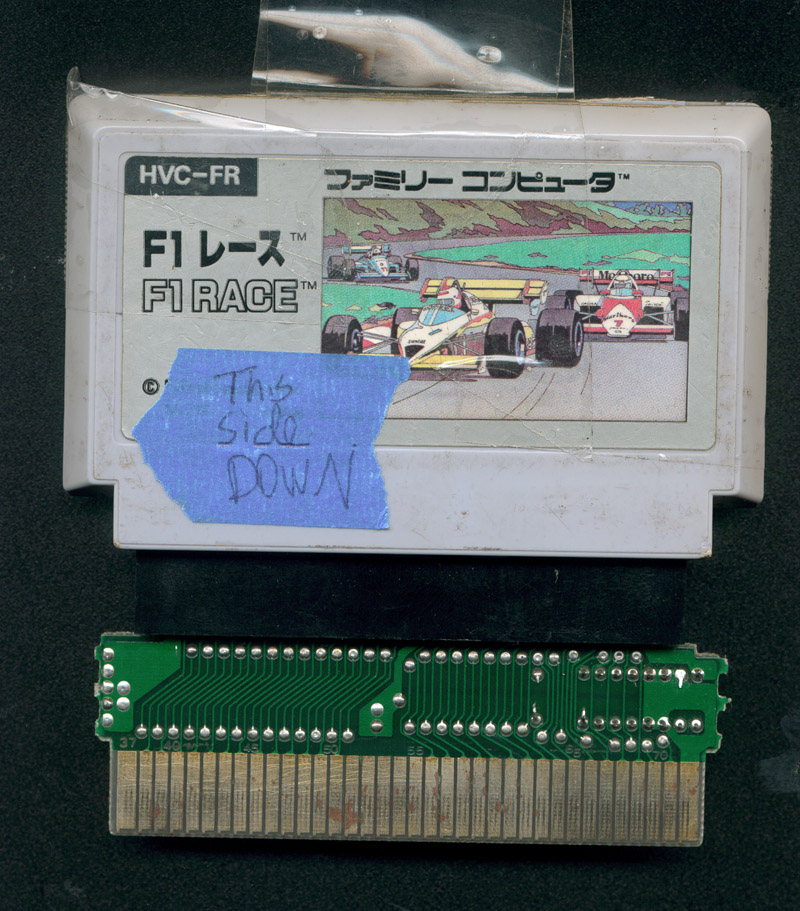CORY ARCANGEL
Title: F1 Racer Mod (aka Japanese Driving Game)
Year: 2004
Medium: Modded FamiCom game cartridge.
Elevator pitch: Just the road from a racing game.
While computers usually accomplish what never gets seen, art makes stories visible by peeling away layers. Cory Arcangel can do both. He virtuously strips technology of its teleology when, in “F1 Racer Mod,” he programs the supposedly essential elements – the car and its driver or player – away from the road in a classic driver game and thus no longer brings the goal, win or progress into view, but rather the empty path toward the future: “The only winning move is not to play,” as they say in WarGames, that early film about the consequences of computer games and simulation from 1983.
But Cory Arcangel is also going back to Jack Kerouac’s On the Road (1957), a key novel of the Beat Generation, in which the westward movement of settlers and the constant pursuit of the frontier are questioned in favor of being on the road. It’s no coincidence that the very place where both settlers and beatniks pushed both their frontiers and those of Pacific Beach soon gave rise to Silicon Valley, nor is it a coincidence that driving became one of the first casualties of computer simulation and (data) highways became the first bad metaphor for the Internet.
We know where Cory Arcangel’s roads lead. But where do they come from in their straightforward endlessness? Media and art have always told their own stories, whether we like it or not. Arcangel’s view of the street, his first-person perspective, comes from the historical depths of the early Renaissance. In the 15th century, Filippo Brunelleschi and Leon Battista Alberti first developed technical construction methods of central perspective. While Brunelleschi used tools such as a “camera obscura” to produce perspectively correct pictorial spaces, Alberti went the decisive step further and published in Della pittura (1435-36) an idea, inspired by Euclid’s ancient geometry, that every perception is reducible to constructible geometric elements. From Brunelleschi to Arcangel, the painter and constructor, artist and programmer are one and the same. Without this merging of mathematics and art in the Renaissance, there would be neither computers nor computer games today, as both the technical basis and the imagination for a three-dimensional space in a two-dimensional image would be missing. The illusion of depth of space is the vanishing point of the media and art history of “F1 Racer Mod”. All this in the simplicity of the omission of a car.
As the first time-based work, “F1 Racer Mod” is now being shown in the special space that GON runs in Vienna and is entirely designed by artists*. Arcangel’s “mod” meets GON’s fashion, which encodes equally endless layers of history in its patterns. The pantsuits designed for the occasion are certainly the racing jerseys we wear as pilots of aimless races in post-digital spaces. They are anything but streamlined and fall out of Renaissance escape lines into baroque folds and monochrome geometry.
© Paul Feigelfeld


